Africa · Botswana · Namibia · Photography · Regions · South Africa · Travel Equipment · Zambia
5 of Southern Africa’s best photographic destinations
When I started travelling and working in Africa about seven years ago, you didnt see too many tourists walking around with fancy SLR cameras and bazooka-like lenses. How things have changed. With ever better and more user-friendly digital cameras and equipment available at ever more affordable prices, and with any number of social media channels through which to share images with the short attention-spanned masses, the number of us who fancy ourselves as photographers has ballooned in the past few years. And what better part of the world than southern Africa for this new generation of happy snappers to take shots that look like they are straight out of National Geographic.
So, from the towering mountains and colourful township shebeens of Cape Town right through to the leopards and bee-eaters of the Luangwa Valley in Zambia, here is a rundown of my five favourite photographic destinations in this unfailingly photogenic part of the world.
Chobe National Park
Botswanas Chobe National Park is often referred to as The Land of the Giants and is home to a staggering 120,000 elephants. Theres nowhere better in Africa for photographing these majestic animals.
 Particularly sought after here are images of the elephants swimming or cavorting in the Chobe River itself; vast herds regularly cross from the main section of the park onto some of the lush green islands that are found along the body of this stunning river. The rich riverine ecosystems are also home to 450 species of bird including the iconic African fish eagle and rare specimens such as the African skimmer or malachite kingfisher.
For the best photographs, take a boat cruise with Pangolin Photo Safaris in their customized photographic boat. Pangolins guides are all experienced photographers and state of the art equipment is included in the rates if you dont think your own camera or lenses are up to the task.
While a sunset on the Chobe is a special experience, head out at dawn for great light and fewer boats on the water.
Cape Town
Nobel laureate and South African struggle hero Archbishop Desmond Tutu once said of Cape Towns Table Mountain: I really can understand how, when God created all that there is, he said I think Ive got to do something special here. Whether or not you believe in God, it is impossible not to be in awe of this incredible natural backdrop to the so-called Mother City.
Particularly sought after here are images of the elephants swimming or cavorting in the Chobe River itself; vast herds regularly cross from the main section of the park onto some of the lush green islands that are found along the body of this stunning river. The rich riverine ecosystems are also home to 450 species of bird including the iconic African fish eagle and rare specimens such as the African skimmer or malachite kingfisher.
For the best photographs, take a boat cruise with Pangolin Photo Safaris in their customized photographic boat. Pangolins guides are all experienced photographers and state of the art equipment is included in the rates if you dont think your own camera or lenses are up to the task.
While a sunset on the Chobe is a special experience, head out at dawn for great light and fewer boats on the water.
Cape Town
Nobel laureate and South African struggle hero Archbishop Desmond Tutu once said of Cape Towns Table Mountain: I really can understand how, when God created all that there is, he said I think Ive got to do something special here. Whether or not you believe in God, it is impossible not to be in awe of this incredible natural backdrop to the so-called Mother City.
 But even without the mountain, Cape Town is without doubt the most picturesque city in Africa, with stunning coastlines on all sides and (usually) the steeliest of steely blue skies above. The citys architecture is equally alluring, characterized by a mixture of pretty colonial stalwarts and cutting edge modern design.
Beyond the city itself, the sprawling townships of the Cape Flats show a very different but equally interesting side of Cape Town, and the contrast between the colourful but often ramshackle corrugated iron shacks and the natural beauty and symmetry of the mountain in the distance is particularly poignant.
Cape Towns residents are as diverse and colourful as its architecture. To capture both these aspects at once, head to Bo Kaap, the citys Cape Malay quarter.
South Luangwa
South Luangwa National Park has a density of big game to rival South Africas Kruger, Namibias Etosha and Tanzanias Serengeti, but with a fraction of the tourists. Even in the busier sections along the meandering Luangwa River youll certainly never be jostling with an army of other game vehicles to get the best shots of the action.
But even without the mountain, Cape Town is without doubt the most picturesque city in Africa, with stunning coastlines on all sides and (usually) the steeliest of steely blue skies above. The citys architecture is equally alluring, characterized by a mixture of pretty colonial stalwarts and cutting edge modern design.
Beyond the city itself, the sprawling townships of the Cape Flats show a very different but equally interesting side of Cape Town, and the contrast between the colourful but often ramshackle corrugated iron shacks and the natural beauty and symmetry of the mountain in the distance is particularly poignant.
Cape Towns residents are as diverse and colourful as its architecture. To capture both these aspects at once, head to Bo Kaap, the citys Cape Malay quarter.
South Luangwa
South Luangwa National Park has a density of big game to rival South Africas Kruger, Namibias Etosha and Tanzanias Serengeti, but with a fraction of the tourists. Even in the busier sections along the meandering Luangwa River youll certainly never be jostling with an army of other game vehicles to get the best shots of the action.
 In particular, South Luangwa has become famous for its leopard sightings if you come here and dont get great leopard shots then you are doing something very wrong. For birders, the park is also well-known for its large colonies of brightly-coloured carmine bee-eaters.
The landscapes are just as diverse as the wildlife and range from rugged escarpments covered in dense mopane and ebony forests, to wide open savanna punctuated only by the occasional lonely baobab. To really capture a sense of South Luangwas unspoilt wilderness, head to the wilder Nsefu section of the park in the late afternoon before sunset. The endangered African wild dog is also a good bet in this area.
Sossusvlei
The majestic sand dunes around the Sossusvlei salt and clay pan in Namibias Namib-Naukluft National Park are among the most photographed sights in all of Africa, if not the world. And not without good cause.
In particular, South Luangwa has become famous for its leopard sightings if you come here and dont get great leopard shots then you are doing something very wrong. For birders, the park is also well-known for its large colonies of brightly-coloured carmine bee-eaters.
The landscapes are just as diverse as the wildlife and range from rugged escarpments covered in dense mopane and ebony forests, to wide open savanna punctuated only by the occasional lonely baobab. To really capture a sense of South Luangwas unspoilt wilderness, head to the wilder Nsefu section of the park in the late afternoon before sunset. The endangered African wild dog is also a good bet in this area.
Sossusvlei
The majestic sand dunes around the Sossusvlei salt and clay pan in Namibias Namib-Naukluft National Park are among the most photographed sights in all of Africa, if not the world. And not without good cause.
 The rich, burnt orange hue and beautiful and ever-changing natural curvature of the dunes is particularly striking when seen in contrast to the harsh grey-white of the pans below and the blackened and brittle dead acacia trees dotted across the former oasis of Deadvlei. At sunrise and sunset, the softer light and faster movement of the sun causes the dunes colours to constantly change, while the the sky above becomes deeper and richer.
Be sure to have a wide angle lens with you to get the best landscape shots at Sossusvlei. The occasional Oryx antelope that can be found grazing on the plains with the dunes all around them also makes for a great shot that really puts the magnitude of this other-worldly place into perspective and adds depth to your image. Or if youre really lucky you might even stumble across a desert lion.
The Transkei
The Transkei is one of South Africas poorest and least accessible regions, but this is more than off-set by the fascinating wealth of culture and history that can be found here, as well as by the breathtaking vistas across the undulating landscapes and along the broad arcs of pristine coastline.
The rich, burnt orange hue and beautiful and ever-changing natural curvature of the dunes is particularly striking when seen in contrast to the harsh grey-white of the pans below and the blackened and brittle dead acacia trees dotted across the former oasis of Deadvlei. At sunrise and sunset, the softer light and faster movement of the sun causes the dunes colours to constantly change, while the the sky above becomes deeper and richer.
Be sure to have a wide angle lens with you to get the best landscape shots at Sossusvlei. The occasional Oryx antelope that can be found grazing on the plains with the dunes all around them also makes for a great shot that really puts the magnitude of this other-worldly place into perspective and adds depth to your image. Or if youre really lucky you might even stumble across a desert lion.
The Transkei
The Transkei is one of South Africas poorest and least accessible regions, but this is more than off-set by the fascinating wealth of culture and history that can be found here, as well as by the breathtaking vistas across the undulating landscapes and along the broad arcs of pristine coastline.
 Passing through the traditional Xhosa villages that characterize much of this region, it can seem like you are in a different country from the rest of South Africa a place where time has stood still for perhaps a century.
Most homesteads in the Transkei are found on rugged hillsides and consist of a small grouping of thatched mud brick rondavels painted a cool turquoise. Many of the men in this region still work as semi-nomadic cattle herders, while the women can often be snapped making traditional Xhosa food, whilst dressed in elaborate traditional garb or with their faces painted white with zinc.
Some of the best landscape shots can be taken from the Nelson Mandela Youth and Heritage Centre on the outskirts of Qunu, where the great leader was born, while for particularly unique images of Xhosa culture attend a traditional Xhosa horse racing event.
Passing through the traditional Xhosa villages that characterize much of this region, it can seem like you are in a different country from the rest of South Africa a place where time has stood still for perhaps a century.
Most homesteads in the Transkei are found on rugged hillsides and consist of a small grouping of thatched mud brick rondavels painted a cool turquoise. Many of the men in this region still work as semi-nomadic cattle herders, while the women can often be snapped making traditional Xhosa food, whilst dressed in elaborate traditional garb or with their faces painted white with zinc.
Some of the best landscape shots can be taken from the Nelson Mandela Youth and Heritage Centre on the outskirts of Qunu, where the great leader was born, while for particularly unique images of Xhosa culture attend a traditional Xhosa horse racing event.
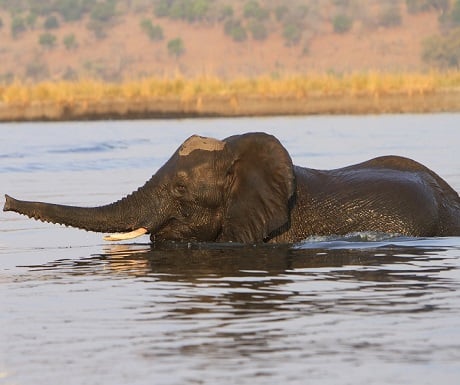 Particularly sought after here are images of the elephants swimming or cavorting in the Chobe River itself; vast herds regularly cross from the main section of the park onto some of the lush green islands that are found along the body of this stunning river. The rich riverine ecosystems are also home to 450 species of bird including the iconic African fish eagle and rare specimens such as the African skimmer or malachite kingfisher.
For the best photographs, take a boat cruise with Pangolin Photo Safaris in their customized photographic boat. Pangolins guides are all experienced photographers and state of the art equipment is included in the rates if you dont think your own camera or lenses are up to the task.
While a sunset on the Chobe is a special experience, head out at dawn for great light and fewer boats on the water.
Cape Town
Nobel laureate and South African struggle hero Archbishop Desmond Tutu once said of Cape Towns Table Mountain: I really can understand how, when God created all that there is, he said I think Ive got to do something special here. Whether or not you believe in God, it is impossible not to be in awe of this incredible natural backdrop to the so-called Mother City.
Particularly sought after here are images of the elephants swimming or cavorting in the Chobe River itself; vast herds regularly cross from the main section of the park onto some of the lush green islands that are found along the body of this stunning river. The rich riverine ecosystems are also home to 450 species of bird including the iconic African fish eagle and rare specimens such as the African skimmer or malachite kingfisher.
For the best photographs, take a boat cruise with Pangolin Photo Safaris in their customized photographic boat. Pangolins guides are all experienced photographers and state of the art equipment is included in the rates if you dont think your own camera or lenses are up to the task.
While a sunset on the Chobe is a special experience, head out at dawn for great light and fewer boats on the water.
Cape Town
Nobel laureate and South African struggle hero Archbishop Desmond Tutu once said of Cape Towns Table Mountain: I really can understand how, when God created all that there is, he said I think Ive got to do something special here. Whether or not you believe in God, it is impossible not to be in awe of this incredible natural backdrop to the so-called Mother City.
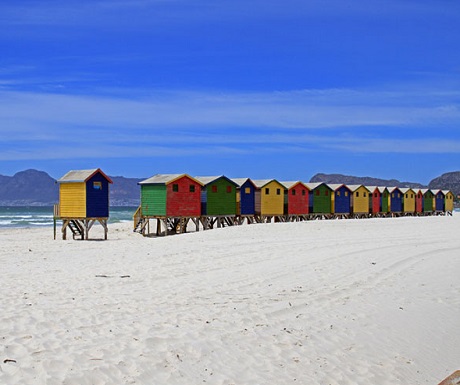 But even without the mountain, Cape Town is without doubt the most picturesque city in Africa, with stunning coastlines on all sides and (usually) the steeliest of steely blue skies above. The citys architecture is equally alluring, characterized by a mixture of pretty colonial stalwarts and cutting edge modern design.
Beyond the city itself, the sprawling townships of the Cape Flats show a very different but equally interesting side of Cape Town, and the contrast between the colourful but often ramshackle corrugated iron shacks and the natural beauty and symmetry of the mountain in the distance is particularly poignant.
Cape Towns residents are as diverse and colourful as its architecture. To capture both these aspects at once, head to Bo Kaap, the citys Cape Malay quarter.
South Luangwa
South Luangwa National Park has a density of big game to rival South Africas Kruger, Namibias Etosha and Tanzanias Serengeti, but with a fraction of the tourists. Even in the busier sections along the meandering Luangwa River youll certainly never be jostling with an army of other game vehicles to get the best shots of the action.
But even without the mountain, Cape Town is without doubt the most picturesque city in Africa, with stunning coastlines on all sides and (usually) the steeliest of steely blue skies above. The citys architecture is equally alluring, characterized by a mixture of pretty colonial stalwarts and cutting edge modern design.
Beyond the city itself, the sprawling townships of the Cape Flats show a very different but equally interesting side of Cape Town, and the contrast between the colourful but often ramshackle corrugated iron shacks and the natural beauty and symmetry of the mountain in the distance is particularly poignant.
Cape Towns residents are as diverse and colourful as its architecture. To capture both these aspects at once, head to Bo Kaap, the citys Cape Malay quarter.
South Luangwa
South Luangwa National Park has a density of big game to rival South Africas Kruger, Namibias Etosha and Tanzanias Serengeti, but with a fraction of the tourists. Even in the busier sections along the meandering Luangwa River youll certainly never be jostling with an army of other game vehicles to get the best shots of the action.
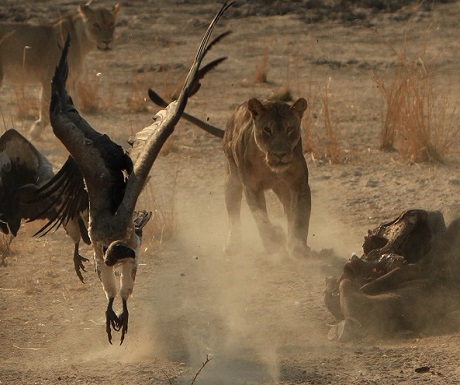 In particular, South Luangwa has become famous for its leopard sightings if you come here and dont get great leopard shots then you are doing something very wrong. For birders, the park is also well-known for its large colonies of brightly-coloured carmine bee-eaters.
The landscapes are just as diverse as the wildlife and range from rugged escarpments covered in dense mopane and ebony forests, to wide open savanna punctuated only by the occasional lonely baobab. To really capture a sense of South Luangwas unspoilt wilderness, head to the wilder Nsefu section of the park in the late afternoon before sunset. The endangered African wild dog is also a good bet in this area.
Sossusvlei
The majestic sand dunes around the Sossusvlei salt and clay pan in Namibias Namib-Naukluft National Park are among the most photographed sights in all of Africa, if not the world. And not without good cause.
In particular, South Luangwa has become famous for its leopard sightings if you come here and dont get great leopard shots then you are doing something very wrong. For birders, the park is also well-known for its large colonies of brightly-coloured carmine bee-eaters.
The landscapes are just as diverse as the wildlife and range from rugged escarpments covered in dense mopane and ebony forests, to wide open savanna punctuated only by the occasional lonely baobab. To really capture a sense of South Luangwas unspoilt wilderness, head to the wilder Nsefu section of the park in the late afternoon before sunset. The endangered African wild dog is also a good bet in this area.
Sossusvlei
The majestic sand dunes around the Sossusvlei salt and clay pan in Namibias Namib-Naukluft National Park are among the most photographed sights in all of Africa, if not the world. And not without good cause.
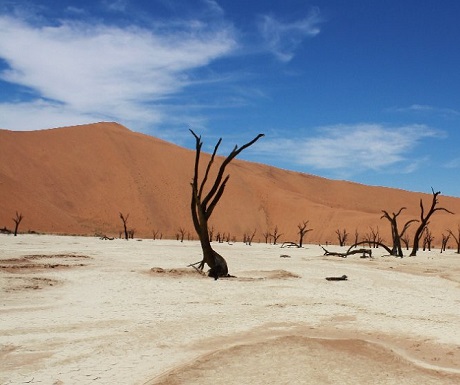 The rich, burnt orange hue and beautiful and ever-changing natural curvature of the dunes is particularly striking when seen in contrast to the harsh grey-white of the pans below and the blackened and brittle dead acacia trees dotted across the former oasis of Deadvlei. At sunrise and sunset, the softer light and faster movement of the sun causes the dunes colours to constantly change, while the the sky above becomes deeper and richer.
Be sure to have a wide angle lens with you to get the best landscape shots at Sossusvlei. The occasional Oryx antelope that can be found grazing on the plains with the dunes all around them also makes for a great shot that really puts the magnitude of this other-worldly place into perspective and adds depth to your image. Or if youre really lucky you might even stumble across a desert lion.
The Transkei
The Transkei is one of South Africas poorest and least accessible regions, but this is more than off-set by the fascinating wealth of culture and history that can be found here, as well as by the breathtaking vistas across the undulating landscapes and along the broad arcs of pristine coastline.
The rich, burnt orange hue and beautiful and ever-changing natural curvature of the dunes is particularly striking when seen in contrast to the harsh grey-white of the pans below and the blackened and brittle dead acacia trees dotted across the former oasis of Deadvlei. At sunrise and sunset, the softer light and faster movement of the sun causes the dunes colours to constantly change, while the the sky above becomes deeper and richer.
Be sure to have a wide angle lens with you to get the best landscape shots at Sossusvlei. The occasional Oryx antelope that can be found grazing on the plains with the dunes all around them also makes for a great shot that really puts the magnitude of this other-worldly place into perspective and adds depth to your image. Or if youre really lucky you might even stumble across a desert lion.
The Transkei
The Transkei is one of South Africas poorest and least accessible regions, but this is more than off-set by the fascinating wealth of culture and history that can be found here, as well as by the breathtaking vistas across the undulating landscapes and along the broad arcs of pristine coastline.
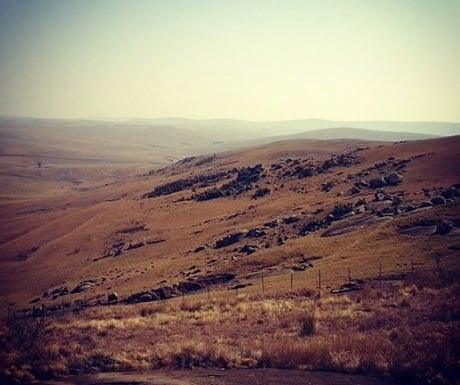 Passing through the traditional Xhosa villages that characterize much of this region, it can seem like you are in a different country from the rest of South Africa a place where time has stood still for perhaps a century.
Most homesteads in the Transkei are found on rugged hillsides and consist of a small grouping of thatched mud brick rondavels painted a cool turquoise. Many of the men in this region still work as semi-nomadic cattle herders, while the women can often be snapped making traditional Xhosa food, whilst dressed in elaborate traditional garb or with their faces painted white with zinc.
Some of the best landscape shots can be taken from the Nelson Mandela Youth and Heritage Centre on the outskirts of Qunu, where the great leader was born, while for particularly unique images of Xhosa culture attend a traditional Xhosa horse racing event.
Passing through the traditional Xhosa villages that characterize much of this region, it can seem like you are in a different country from the rest of South Africa a place where time has stood still for perhaps a century.
Most homesteads in the Transkei are found on rugged hillsides and consist of a small grouping of thatched mud brick rondavels painted a cool turquoise. Many of the men in this region still work as semi-nomadic cattle herders, while the women can often be snapped making traditional Xhosa food, whilst dressed in elaborate traditional garb or with their faces painted white with zinc.
Some of the best landscape shots can be taken from the Nelson Mandela Youth and Heritage Centre on the outskirts of Qunu, where the great leader was born, while for particularly unique images of Xhosa culture attend a traditional Xhosa horse racing event.Did you enjoy this article?
Receive similar content direct to your inbox.

